A Micro-Test Structure for the Thermal Expansion Coefficient of Metal Materials
Abstract
:1. Introduction
2. Test Structure and Analytical Model
2.1. Theory Model of Vertical Sensing Capacitor
2.2. Theory Model of Lateral Sensing Capacitor
3. Finite Element Simulations
4. Fabrication and Experiment
4.1. Fabrication
4.2. Experiment and Discussion
5. Conclusions
Acknowledgments
Author Contributions
Conflicts of Interest
References
- Liu, C. Thermal sensing and actuation. In Foundations of MEMS, 2nd ed.; Marcia, J.H., Andrew, G., Eds.; Prentice Hall Inc.: Bergen County, NJ, USA, 2012; pp. 182–193. [Google Scholar]
- Mankame, G.D.; Ananthasuresh, G.K. A comprehensive thermal modelling and characterization of an electro-thermal-compliant microactuator. J. Micromech. Microeng. 2001, 11, 452–462. [Google Scholar] [CrossRef]
- Ogando, K.; Forgia, N.L.; Zarate, J.J.; Pastoriza, H. Design and characterization of a fully compliant out-of-plane thermal actuator. Sens. Actuators A Phys. 2012, 183, 95–100. [Google Scholar] [CrossRef]
- Ma, H.Y.; Huang, Q.A.; Qin, M. A micromachined silicon capacitive temperature sensor for wide temperature range applications. J. Micromech. Microeng. 2010, 20, 055036. [Google Scholar] [CrossRef]
- Read, B.C.; Bright, V.M.; Comtois, J.H. Mechanical and optical characterization of thermal microactuators fabricated in a CMOS process. Proc. SPIE 1995, 2642, 22–32. [Google Scholar]
- Barron, T.H.K.; Collins, J.G.; White, G.K. Thermal expansion of solids at low temperatures. Adv. Phys. 1980, 29, 609–730. [Google Scholar] [CrossRef]
- White, G.K. Thermal expansion at low temperatures. Nature 1960, 187, 927–929. [Google Scholar] [CrossRef]
- Comtois, J.H.; Bright, V.M. Applications for surface-micromachined polysilicon thermal actuators and arrays. Sens. Actuators A Phys. 1997, 58, 19–25. [Google Scholar] [CrossRef]
- Liu, H.Y.; Li, W.H.; Zhou, Z.F. In Situ test structures for the thermal expansion coefficient and residual stress of polysilicon thin films. J. Micromech. Microeng. 2013, 23, 075019. [Google Scholar] [CrossRef]
- Pan, C.H. A simple method for determining linear thermal expansion coefficients of thin films. J. Micromech. Microeng. 2002, 12, 548–555. [Google Scholar] [CrossRef]
- Chae, J.H.; Lee, J.Y.; Kang, S.W. Measurement of thermal expansion coefficient of poly-Si using microgauge sensors. Sens. Actuators A Phys. 1999, 75, 222–229. [Google Scholar] [CrossRef]
- Murarka, S.P.; Retajczyk, T.F. Effect of phosphorus doping on stress in silicon and polycrystalline silicon. J. Appl. Phys. 1983, 54, 2069–2072. [Google Scholar] [CrossRef]
- Retajczyk, T.F.; Sinha, A.K. Elastic stiffness and thermal expansion coefficient of BN films. Appl. Phys. Lett. 1980, 36, 161–163. [Google Scholar] [CrossRef]
- Antii, M.L.; Babushkin, O.; Shen, Z. Thermal expansion behaviour of high melting point oxides. Key Eng. Mater. 1999, 164–165, 279–282. [Google Scholar] [CrossRef]
- James, J.D.; Spittle, J.A.; Brown, S.G.R. A review of measurement techniques for the thermal expansion coefficient of metals and alloys at elevated temperatures. Meas. Sci. Technol. 2001, 12, R1–R5. [Google Scholar] [CrossRef]
- Rotter, M.; Muller, H.; Gratz, E. A miniature capacitance dilatometer for thermal expansion and magnetostriction. Rev. Sci. Instrum. 1998, 69, 2742–2746. [Google Scholar] [CrossRef]
- Kirby, R.K. Measurement of thermal radiation properties of materials. In Compendium of Thermophysical Property Measurement Methods, 2nd ed.; Maglic, K.D., Cezairliyan, A., Peletsky, V.E., Eds.; Plenmu Press Inc.: New York, NY, USA; London, UK, 1992; pp. 709–762. [Google Scholar]
- Senturia, S.D. Microsystem Design; Kluwer Academic Pulishers: New York, NY, USA; Boston, MA, USA; London, UK; Dordrecht, The Netherlands; Moscow, Russia, 2002; pp. 183–201. [Google Scholar]
- Timoshenko, S.P.; Goodier, J.N. Theory of Elasticity; McGraw-Hill: New York, NY, USA, 1951; pp. 8–27. [Google Scholar]
- Nash, W.A. Schaum’s Outline of Theory and Problems of Strength of Materials; McGraw-Hill: New York, NY, USA, 1972; p. 392. [Google Scholar]
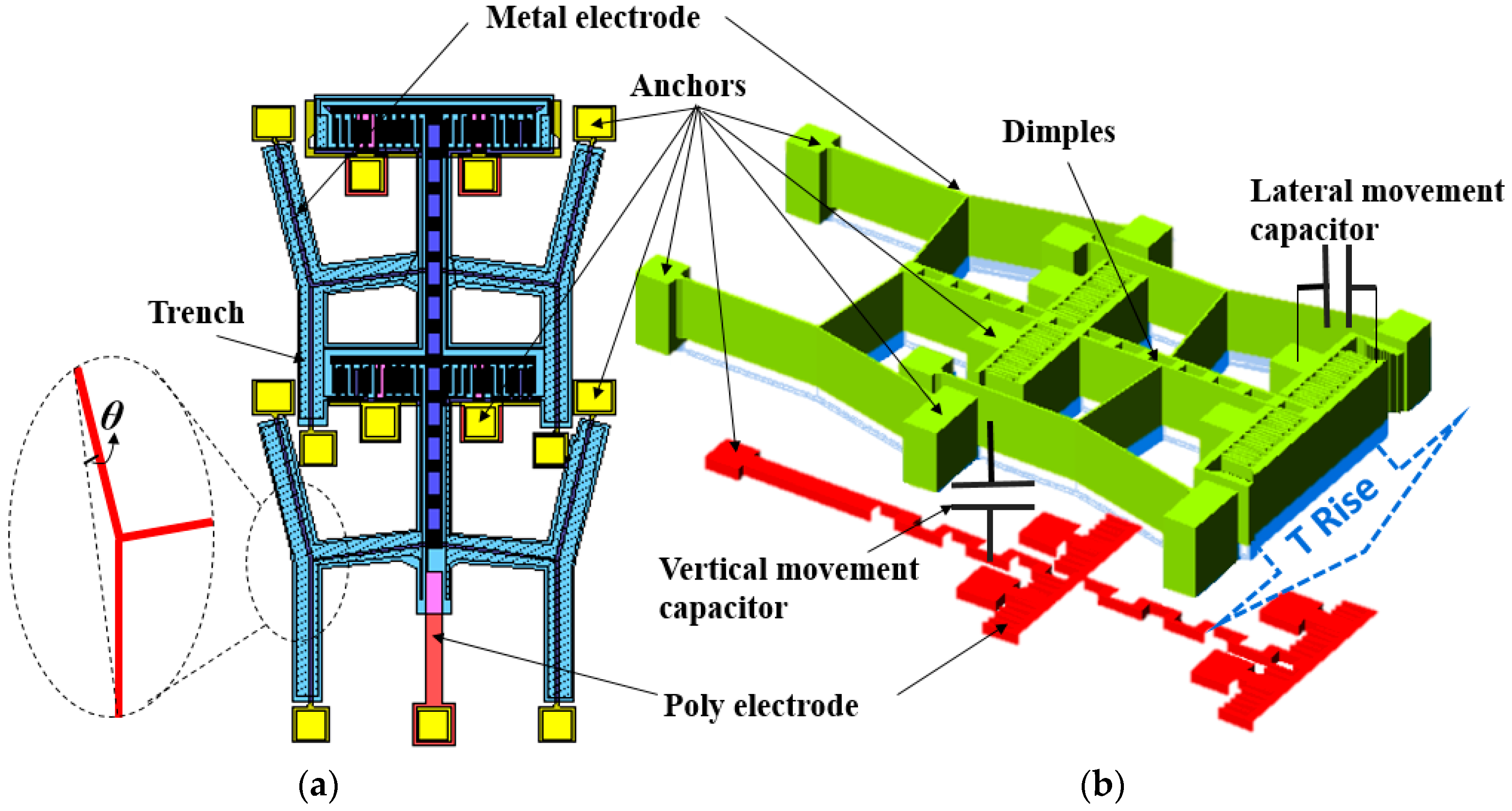
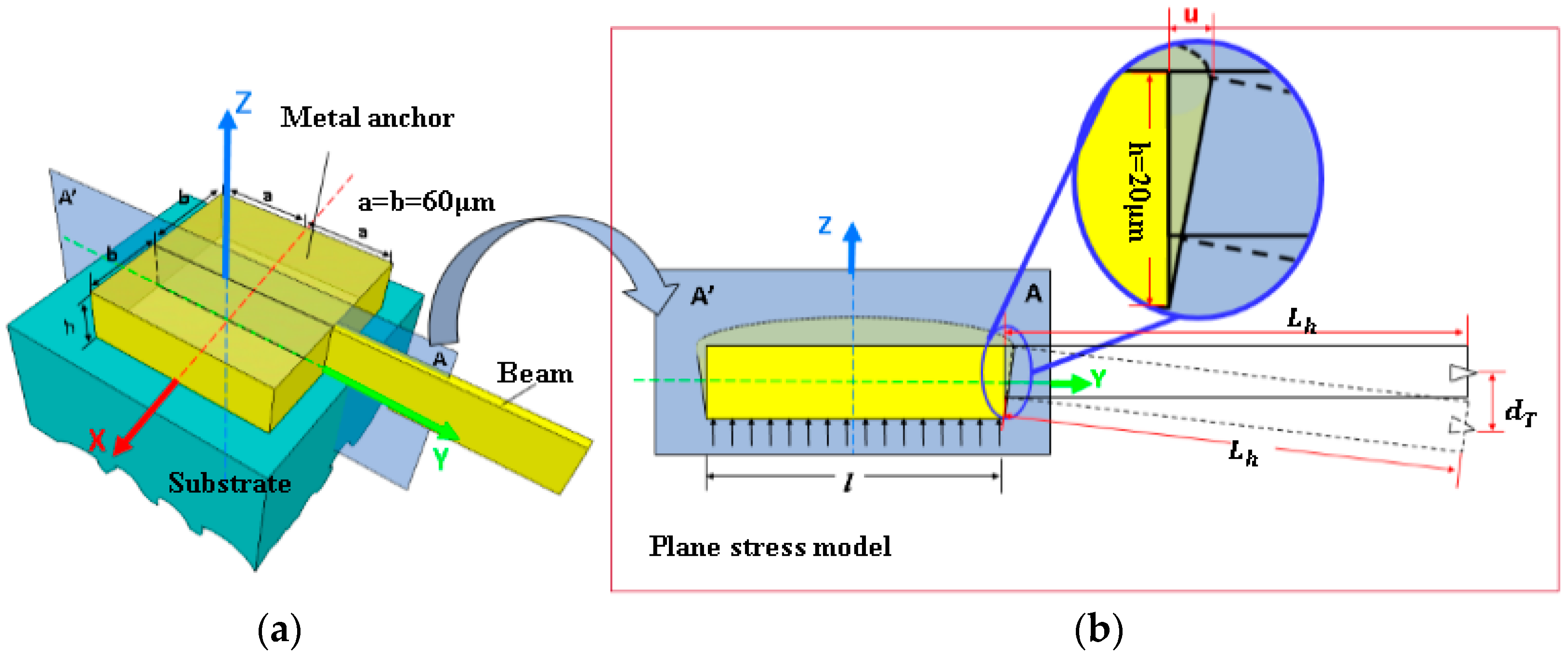


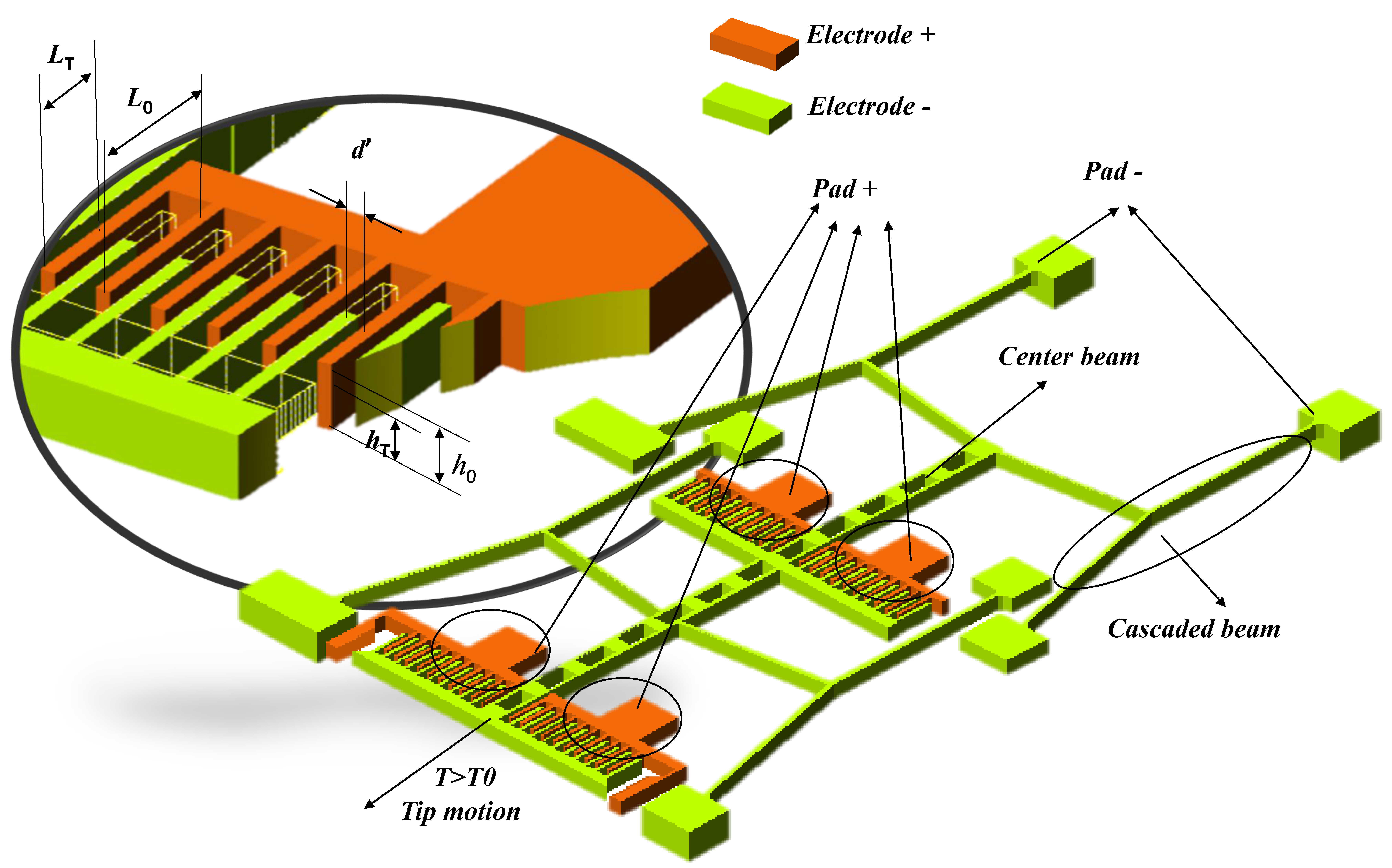
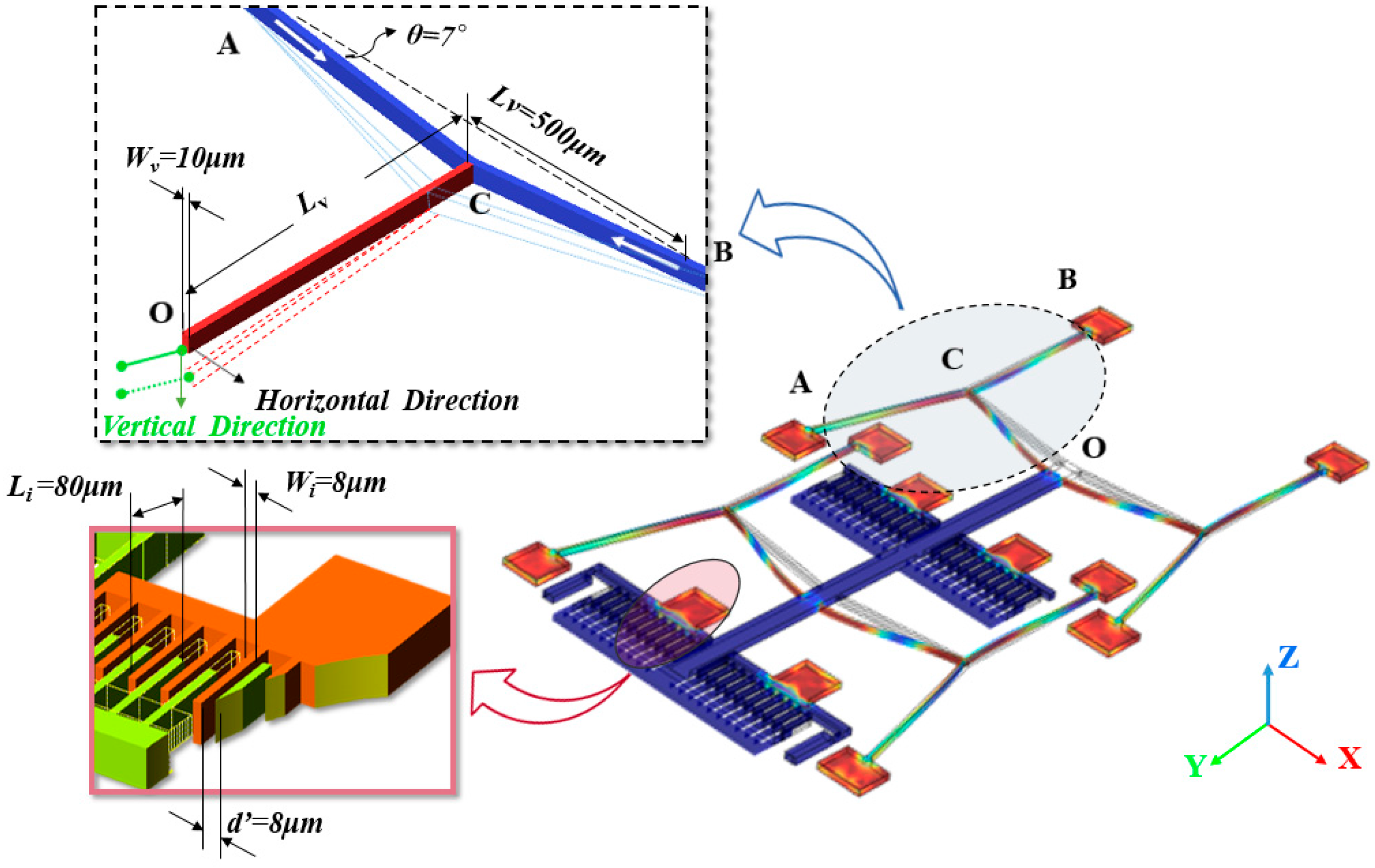
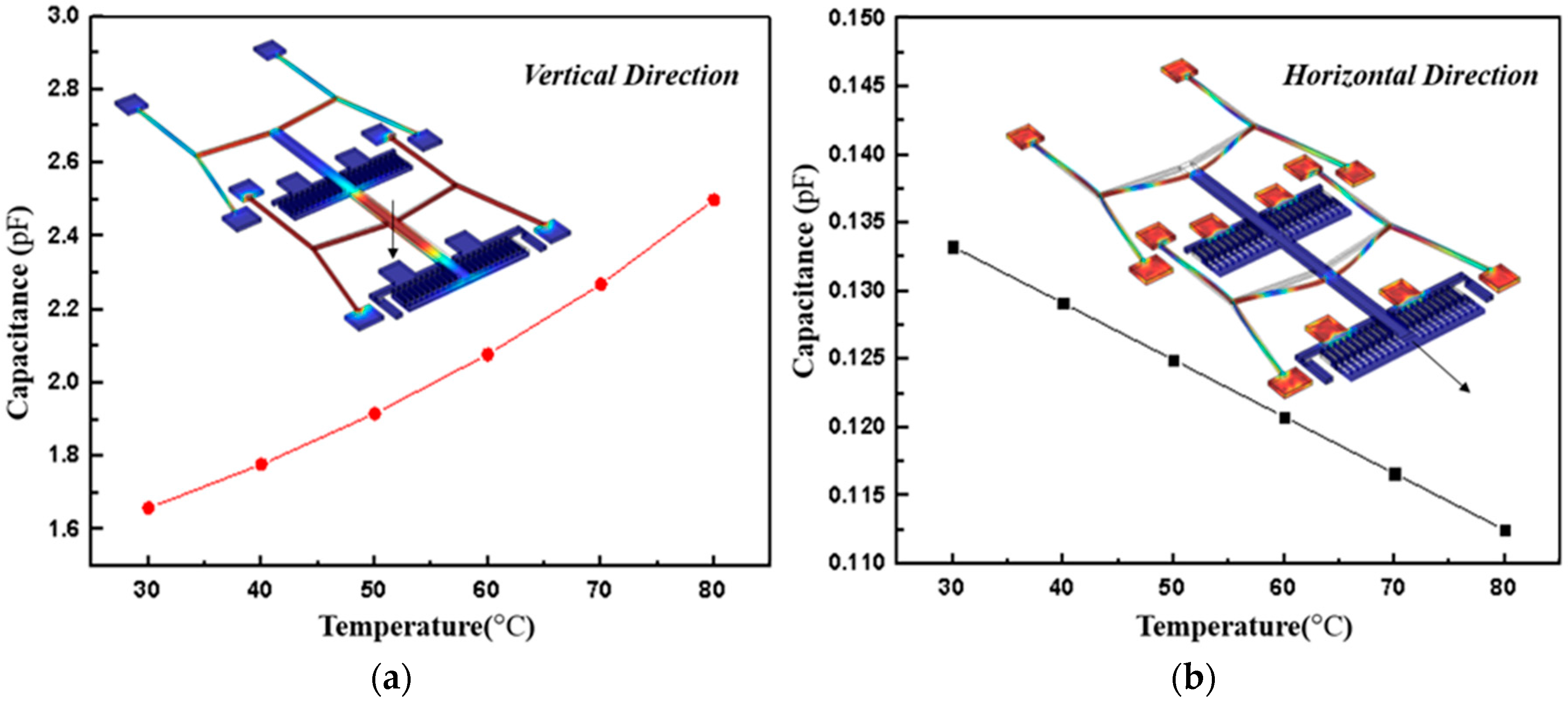
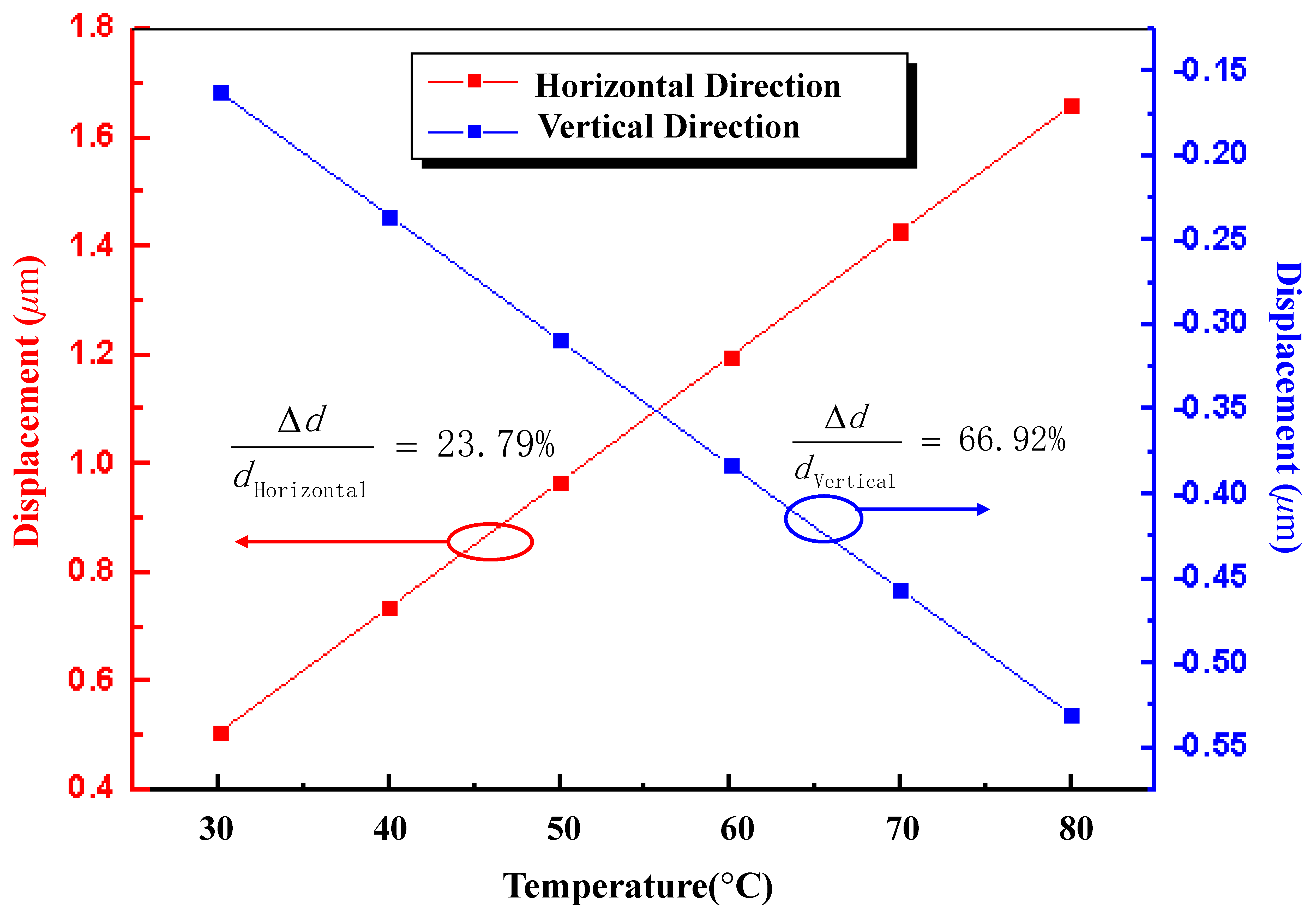
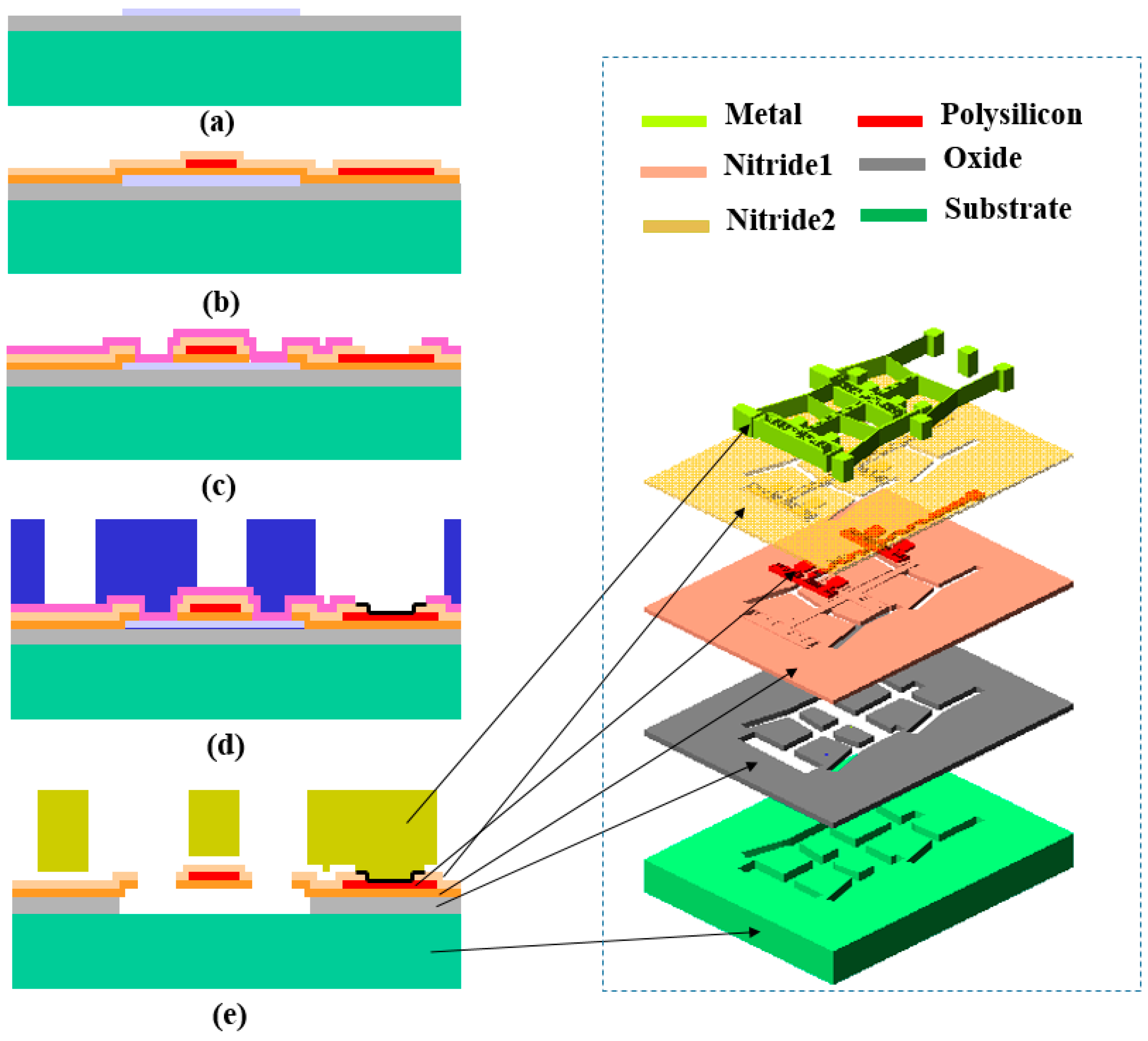
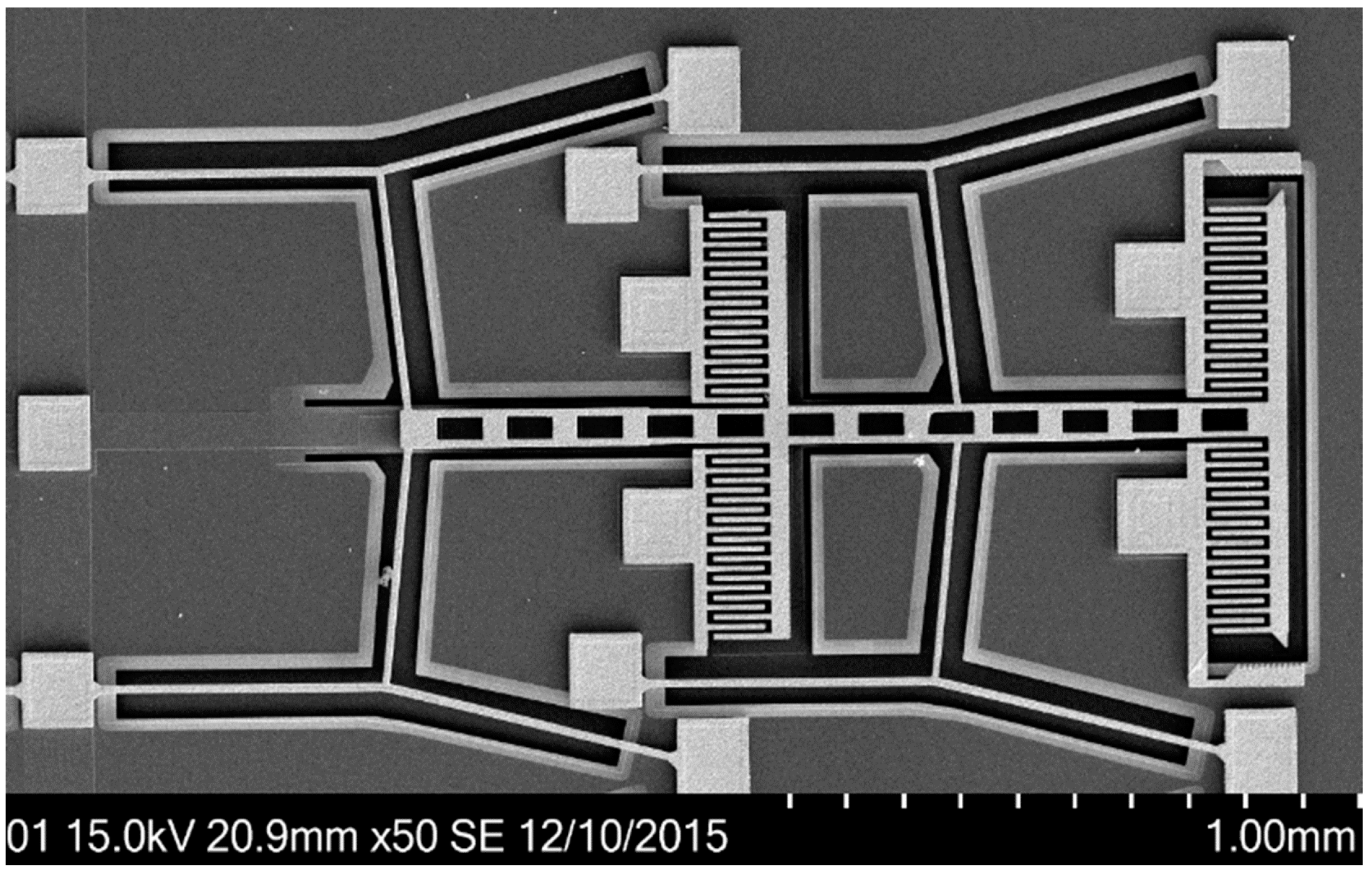

| Parameter | Value |
|---|---|
| Young’s modulus E | 2.19 × 1011 (Pa) |
| Poisson’s ratio μ | 0.31 |
| Thermal conductivity | 90.7 (W/(m·K)) |
| TEC of Si | 2.33 × 10−6 °C−1 |
| TEC of Ni | 13 × 10−6 °C−1 |
| Vacuum permittivity | 8.85 × 10−12 |
| Relative dielectric constant of free space ε | 1 |
© 2017 by the authors. Licensee MDPI, Basel, Switzerland. This article is an open access article distributed under the terms and conditions of the Creative Commons Attribution (CC BY) license ( http://creativecommons.org/licenses/by/4.0/).
Share and Cite
Ren, Q.; Wang, L.; Huang, Q. A Micro-Test Structure for the Thermal Expansion Coefficient of Metal Materials. Micromachines 2017, 8, 70. https://doi.org/10.3390/mi8030070
Ren Q, Wang L, Huang Q. A Micro-Test Structure for the Thermal Expansion Coefficient of Metal Materials. Micromachines. 2017; 8(3):70. https://doi.org/10.3390/mi8030070
Chicago/Turabian StyleRen, Qingying, Lifeng Wang, and Qingan Huang. 2017. "A Micro-Test Structure for the Thermal Expansion Coefficient of Metal Materials" Micromachines 8, no. 3: 70. https://doi.org/10.3390/mi8030070






